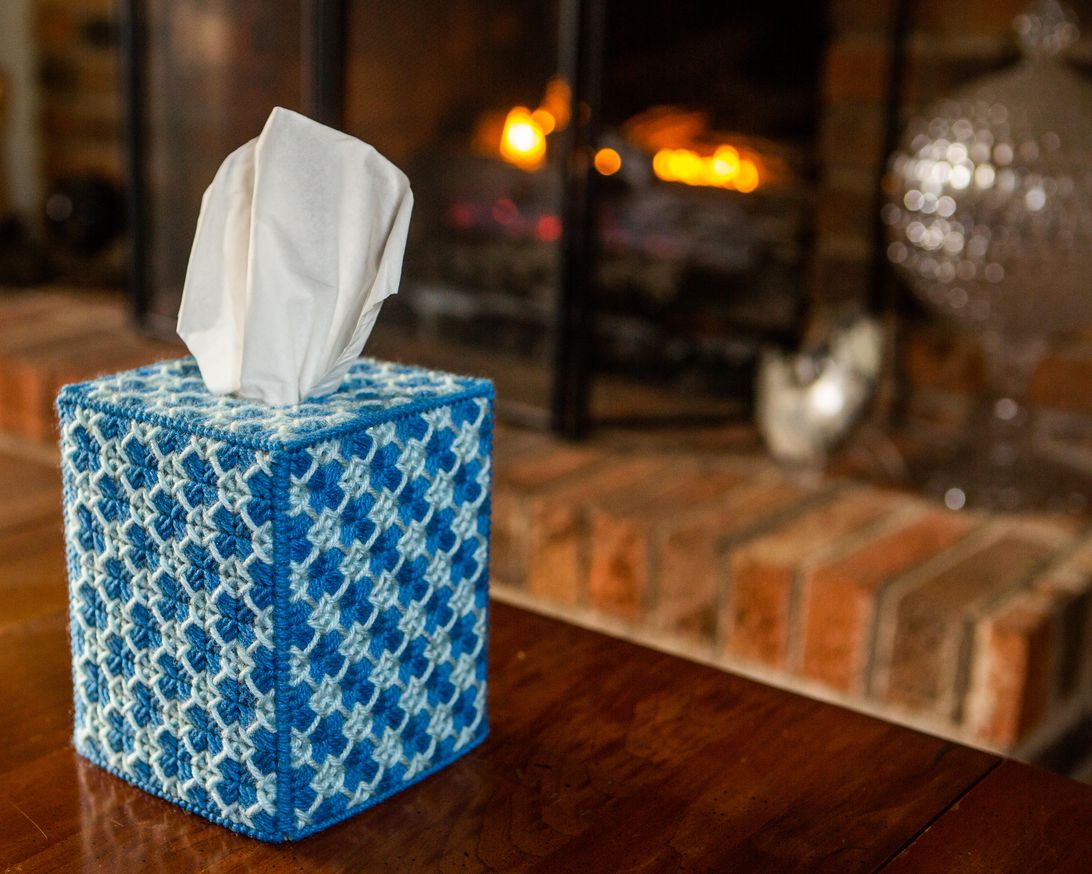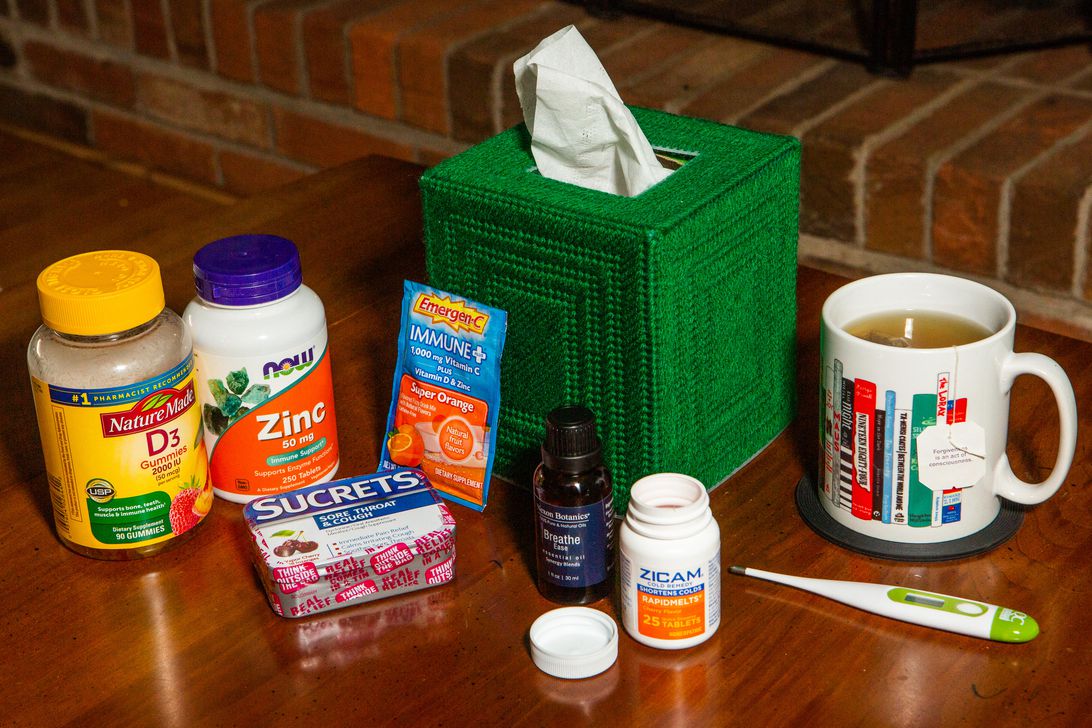
A combination of COVID and the flu can be difficult to detect because of similar symptoms.
Sarah Tew/CNET
During the 2020-2021 flu season, COVID-19 restrictions and widespread mask usage, combined with the annual flu shot, led to an unprecedented decline in yearly influenza cases — and largely helped prevent a “twindemic” of infections by both viruses.
The situation appears much different this year, as the current flu vaccine seems to be a poor match for the dominant strain of influenza. “From our lab-based studies it looks like a major mismatch,” Scott Hensley, a microbiologist at the University of Pennsylvania, told CNN last month.
The less effective flu vaccine, combined with a lifting of lockdowns and mask mandates, could push 2021-2022 back to a more typical flu season, according to the Centers for Disease Control and Prevention, with millions of Americans catching the flu and tens of thousands dying from it.
The CDC reports that 1,825 people were hospitalized with influenza for the week ending Jan. 1, 2022. That’s almost as many as who were infected in the entire 2020-2021 flu season.
Healthcare professionals around the world have started reporting cases of patients contracting COVID-19 and influenza simultaneously, a phenomenon dubbed “flurona” that can bring additional risks to those with underlying health issues.
After Israel reported its first case of flurona on Jan. 2, an unvaccinated teen in LA was reported on Jan. 5, per CBS Los Angeles. Since then, additional cases have popped up in Texas, Kansas, Mississippi, and North Carolina.
“For generally healthy people, the combination could cause illness that keeps them home and in bed for a while, feeling pretty bad,” Dr. Nancy Gin, vice president and chief quality officer for Kaiser Permanente Southern California, told The Orange County Register. “For people with existing high-risk medical conditions like diabetes or heart or lung disease, the result could be admission to the ICU and potentially death.”
That’s why getting both a flu shot and COVID vaccine (and a COVID booster) is important: According to the Register, incidents of “flurona” have also been reported in Hungary, Brazil, the Philippines and China.
Being infected with both respiratory ailments at the same time can be “catastrophic to your immune system,” Dr. Adrian Burrowes, a professor of family medicine at the University of Central Florida, told CNN in September.
Read on for practical guidance about getting your flu shot. For more, here’s which flu-shot side effects you may experience and why epidemiologists suggest taking both a COVID-19 vaccine and flu shot.
What to know about the flu vaccine’s effectiveness this year
Vaccine-makers monitor which flu strains are currently circulating and forecast which are most likely to become the dominant ones during the upcoming flu season. They then produce a vaccine — your flu shot — using three or sometimes four of the likeliest contenders.
The effectiveness of the flu vaccine can fluctuate greatly — from 19% efficacy in the 2014-2015 season to 60% in 2010-2011.
Last year, when about half of US adults and children got a flu shot, the vaccine was 39% effective in preventing infection, according to the CDC. Coupled with the steps the US took to check the spread of COVID-19, the number of reported flu cases during the 2020-2021 season was so low it almost seems like a typo: Just 2,038, compared to 38 million cases reported in the 2019-2020 season.
This year, because of that unbelievably mild season, vaccine-makers had less information to work with. So they created a vaccine containing four likely variants, known as a quadrivalent flu vaccine, to increase the chances of nailing the dominant strain this year.
“There was enough data to make a good educated guess,” L.J. Tan, chief strategy officer for the Immunization Action Coalition, said in October. Back then, Tan said experts were confident “we got it right.”
But more recent research suggests they were off the mark, as a mutated form of the Influenza A H3N2 variant, called 2a2, has become the dominant strain.
According to the CDC, the majority of influenza strains detected this season so far are A(H3N2), mostly occurring in children and young adults ages 5 to 24 years old, however, the proportion of infections among adults 25 older has been increasing.
In November, the Michigan Department of Health and Human Services reported a rapid increase in the mutated H3N2 strain at the University of Michigan at Ann Arbor, with 745 laboratory-confirmed cases between Oct. 6 and Nov 19.
If it’s a bad match, should I bother getting a flu shot this year?
Absolutely. Experts recommend the flu vaccine for anyone six months or older and even a poorly matched vaccine can greatly reduce the severity of the flu in those who are infected: According to the CDC, getting vaccinated for flu can reduce the risk of having to go to the doctor 40 to 60%.
“Studies have clearly shown that seasonal influenza vaccines consistently prevent hospitalizations and deaths even in years where there are large antigenic mismatches,” the authors wrote in the preprint report.
When should I get a flu shot?
The short answer is: Now. In the Northern Hemisphere, flu season usually runs from October to May. But the influenza virus is less concerned with the calendar and more with spreading as widely as possible. The timing this year could be less predictable, experts warn, given last year’s mild flu season and our changing behaviors around the COVID-19 pandemic.
Don’t try to time your flu shot for when the flu will hit. To be ready, experts recommend, get your shot as soon as you can.
“We have a normal time when we expect the flu,” Peter Chin-Hong, a medical doctor and professor in the Health Division of Infectious Diseases at the University of California, San Francisco, told CNET. “But this year, it could be atypical or drag on longer, so that’s what people need to be prepared for.”
A similar shift in the timing of a seasonal virus infection happened this summer, when the US and Japan saw a spike in respiratory syncytial virus, or RSV, infections in schoolchildren, Chin-Hong said. That’s because students were being educated remotely the winter before — when RSV infections normally occur — and didn’t get exposed to the virus and build up immunity. That allowed the virus to spread in the summer, instead.
Plan on making an appointment to get your flu shot
If you’re used to walking up to your local pharmacy, hospital or doctor’s offcie to get a flu shot whenever it’s most convenient, you may find this year that you have to schedule an appointment, as providers struggle to treat COVID patients, maintain social distancing protocols and meet the demand for COVID testing and vaccinations.
Walgreens’ chief medical officer, Kevin Ban, recommends scheduling COVID-19 and flu vaccinations online.
“We are doing as much as possible to make it easy for people to schedule their appointments and get seamlessly vaccinated,” Ban said, adding that you can also call Walgreens’ toll-free number to make an appointment.

Now’s the time to get ready for flu season.
Sarah Tew/CNET
It’s safe to get your COVID and flu shots simultaneously
The CDC has confirmed it’s safe to get a flu shot and COVID vaccination in the same sitting. (Vaccine-maker Moderna is actually working on a combination COVID-19/flu vaccine, but that combo won’t be available this year.)
And don’t worry about more serious side effects with a four-part flu vaccine: Whether the shot uses three components or four, the typical side effects should be the same, Chin-Hong, the UCSF doctor, said. Those include redness or swelling at the injection site, muscle ache, mild fever, headache and nausea, all of which should clear up after a few days.
Want more? We’ve debunked 9 myths about the flu shot and explain how to tell if you have the flu, COVID, or a common cold.
The information contained in this article is for educational and informational purposes only and is not intended as health or medical advice. Always consult a physician or other qualified health provider regarding any questions you may have about a medical condition or health objectives.